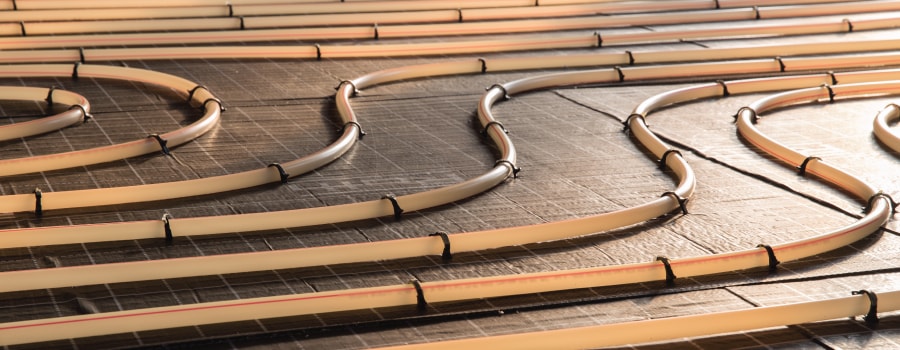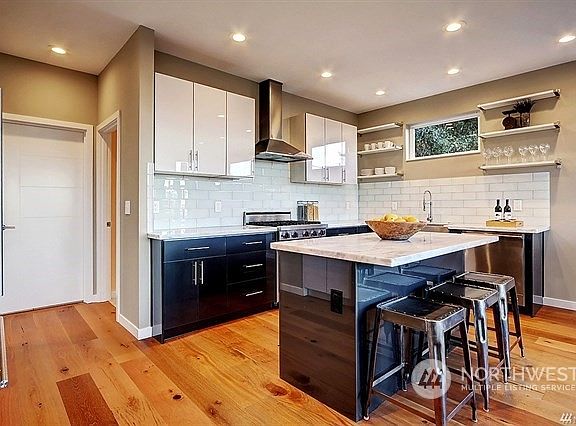

Here's a video of the gas line from the street to the ADU, which is the gas supply that is used for both the water heater and for the gas powered cooking range.

It's gas powered, which is a more efficient way to heat water than heating with electricity, but both power sources are available as options for the tankless water heaters. My water heater is a Navien condensing combi tankless water heater. Europe, for example, uses a far greater percentage of other heat types-primarily forms of radiant heat.

While in the US, homes ares primarily heated using forced air (a form of convective heat), we are alone in this approach globally. Houses heated by forced air tend to have spots that feel cold- areas far from the vents, or areas near cold surfaces like windows. Cooler surfaces draw heat from your body. Even if the air is warmed in a space, cold surfaces can still make you feel cold. The surfaces of the house will remain cool to the touch. That energy that was used to heat that air is quickly dissipated and lost. That heat is quickly dissipated because air does not have the thermal mass to retain that heat. That's radiant heat gain working its magic on your front side, and radiant heat loss working on your back side.Ĭonversely, forced air heat does not heat up surfaces it only heats the air that is then blown throughout the space, and air a poor heat conductor. This is akin to when you're standing outside on a cold night, with your front side is facing a campfire. Interestingly, with radiant surfaces everywhere, air temperature in a house can actually be lower than what you think is comfortable, and you will still feel warm. Radiant in-floor heating is a comfortable way to experience heat evenly throughout a home. Radiant floor heating will heat the surfaces in the house to a particular temperature (~70 degrees), and those surfaces will then radiate that heat outwards towards the occupants, reducing our body's heat loss towards those surfaces. Radiant heats works totally differently than forced air heat. Radiant heat is generally the most comfortable and effective way to experience and manage heat. Most of us group these three forms together in our head as "heating", but they function totally differently from one another.įorced air is convective, and although it is the dominant mechanism used for residential heating in this country, it is not a good way to heat most residences. There are three forms of heating: radiant, convective, and conductive heat. Radiant in-floor, hydronic heat is the heat source, along with some passive solar heating. Meanwhile, a heat exchange heats up more water in the heater in a separate "closed loop" to a lower heated temperature (~70-80 degrees) that runs through the Pex tubing throughout the first and second floors, providing in-floor radiant heat. A tankless, on-demand water heater is inherently is more energy efficient than a conventional 60-gallon holding tank water heater, which keeps 60 gallons of water heated constantly, even when there is no need for hot water. The water heater is "tankless", which means that it heats up water "on demand", only when needed. Some of that (cold) water is directed to the water heater, which heats the water to ~120 degrees whenever we turn the hot water (for a shower, sink, dishwasher). This post will deal with the tankless water heater and radiant heating, which I've mentioned in other posts, but never fully described.Īn ADU water line splits off the water main in the main house basement, and comes to the ADU underground. It was fun to be able to show off the place to so many people, and I hope that it left some of you all inspired to see more ADUs. Thanks to everyone who came out to the ADU on the Build It Green tour.


 0 kommentar(er)
0 kommentar(er)
